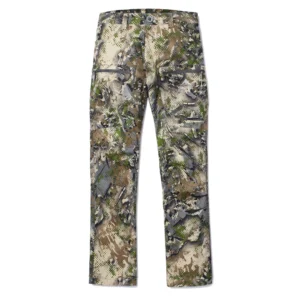Many people think that food plots are just used as bait piles for hunting whitetail deer. While food plots are often utilized by whitetail hunters, that is not the primary goal of planting food plots.
WHY PLANT A FOOD PLOT?
Often, you will see a large property that is 400 acres or more that is 80% planted plantation pine trees. That means that the whitetail population has to rely mostly on browse and small green vegetation in the thickets for their nutrition.
As we start to get further into fall, the browse that whitetail feed on starts to dry up, and the hard crop, such as acorns, rot and sour. This leaves a large gap in nutrition for whitetail populations. Food plots are a way to help provide a source for that missing nutrition.
When land-owners plant flood plots for deer, they are planting them for carrying capacity. They want to make sure that they have an idea of how many deer they have in the area and be able to provide them the nutrition that they need to get through the fall and winter months when natural vegetation is scarce.

WHEN TO PLANT DEER FOOD PLOTS
Knowing when to plant your deer food plots depends entirely on where you live and the growing season. If you plant too early there is a large possibility of bugs and worms getting to your seed and ruining the quality of the crop. And on the other hand, if you plant too late, the seed won’t mature quickly enough for the nutritional benefits.
For those living in the Northeast, it is recommended to start planting your food plots in August or early September.
For those in the Midwest, it is recommended to wait until about September.
And for those in the Southern region, it is recommended to wait until about October.
FOOD PLOT EQUIPMENT
There is a huge variety of brands and styles of food plot equipment that can be used, but generally, there are 5 main items needed:
- Grass and Weed Killer
- Ground Tiller
- Seed/Fertilizer Spreader
- Fertilizer
- Food Plot Seed
CHOOSING FOOD PLOT SEED
If you aren’t familiar with the nutritional needs of the deer in your area, it may be beneficial to get with a biologist in your area to determine the type of feed to plant to ensure that you provide nutrition for the whitetail in your area for the entire length of the season. We recommend looking into a mix that fills two needs for deer food plots: nutrition diversity and diverse growth patterns.
On our plots in the South, we prefer to use a 10-way mix that contains wheat, oats, rye, peas, purple top turnips, chicory, rape – a broad leaf type of plant, and three different kinds of clover – crimson, ladino, and arrow leaf. Each one of these plants provides a different nutritional need for whitetail deer in our area, but they also grow in different stages. Some plants will start growing within the next 10 days to provide quicker nutritional needs and some will grow slower and provide a more sustainable food source throughout the entire season.
HOW TO PLANT DEER FOOD PLOTS
While you may not plant your food plot seed until later in the year, you do need to start prepping your plot months in advance.
GET A SOIL SAMPLE
A soil sample would be beneficial to determine soil pH and crop nutrient needs. This may sound like an unnecessary step, but this will help ensure, not only that your crop grows well, but that it has the palatability to attract deer as well.
KILL WEEDS
In late spring or early summer, after your hunts have finished and the browse has started to replenish, you want to go into your plot and mow down any weeds and grass that may have started to take over your plot. And you may need to come back later in the summer, June or July, and mow them again, depending on how much they have taken over the plot.
AERATE SOIL
After spraying, you want to go in with some sort of a tiller and break up the plots around August or so. When you do this first round of tilling, try to ensure that the discs of your tiller get deep into the ground and break it up well. You should finish this part with large rows of large clumps of dirt.
And let the ground sit for a month or so. The hope is that with these large rows and clumps sitting, the soil will get some rain and hopefully aerate to prep the seedbed for planting.
PREP THE SEEDBED
After the ground has had time to sit, you still have to prep more to have a solid foundation for your plot. Take your tiller and break everything up until it is smooth and powdery.
PLANT YOUR FOOD PLOT SEED
After you have your groundwork done, you are ready for the actual planting. You want to mix your fertilizer and food plot seed into your seed spreader according to whatever your soil conditions require. We recommend using something like Super 13, which is enhanced with lime to help with ground pH as well as some micronutrients.
REAP YOUR REWARDS
Planting food plots takes a lot of work throughout the year. And while some believe that they are solely for hunting purposes, the true intent is to provide food for the whitetail population throughout the season and into the spring. The benefits of providing these nutritional needs, besides having a happy, healthy, thriving whitetail deer population, is that you are going to keep those deer in the area as well as even attract others.
The better your food plots are, the better it is for hunting as well. And while you are preparing for hunting season, make sure to check out Skre’s whitetail hunting gear!

